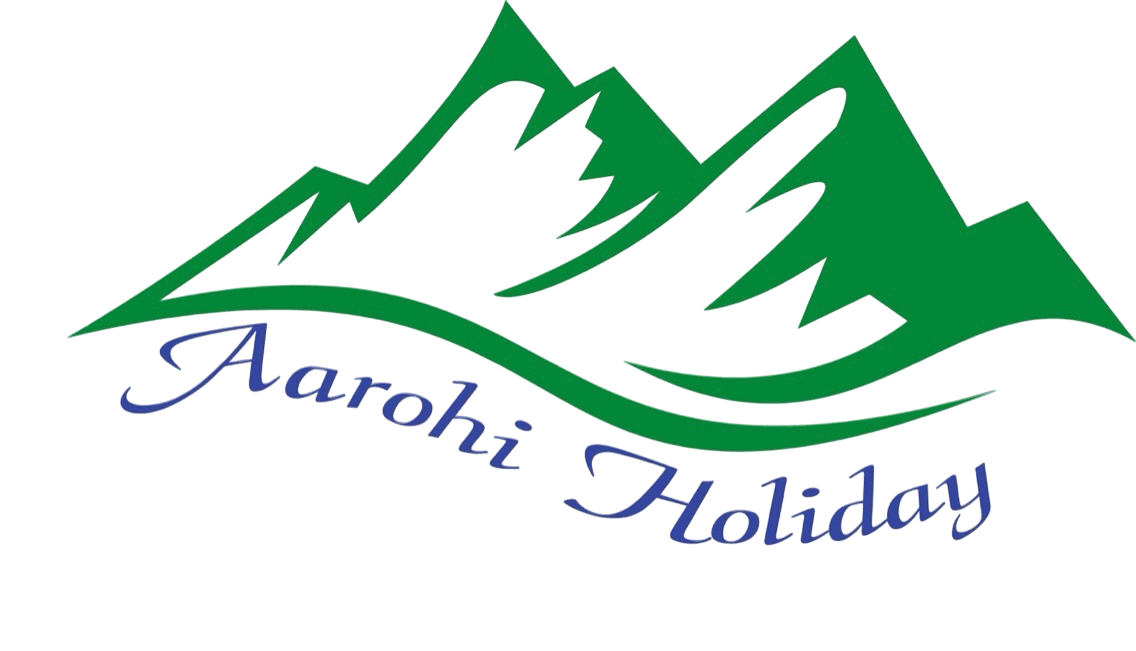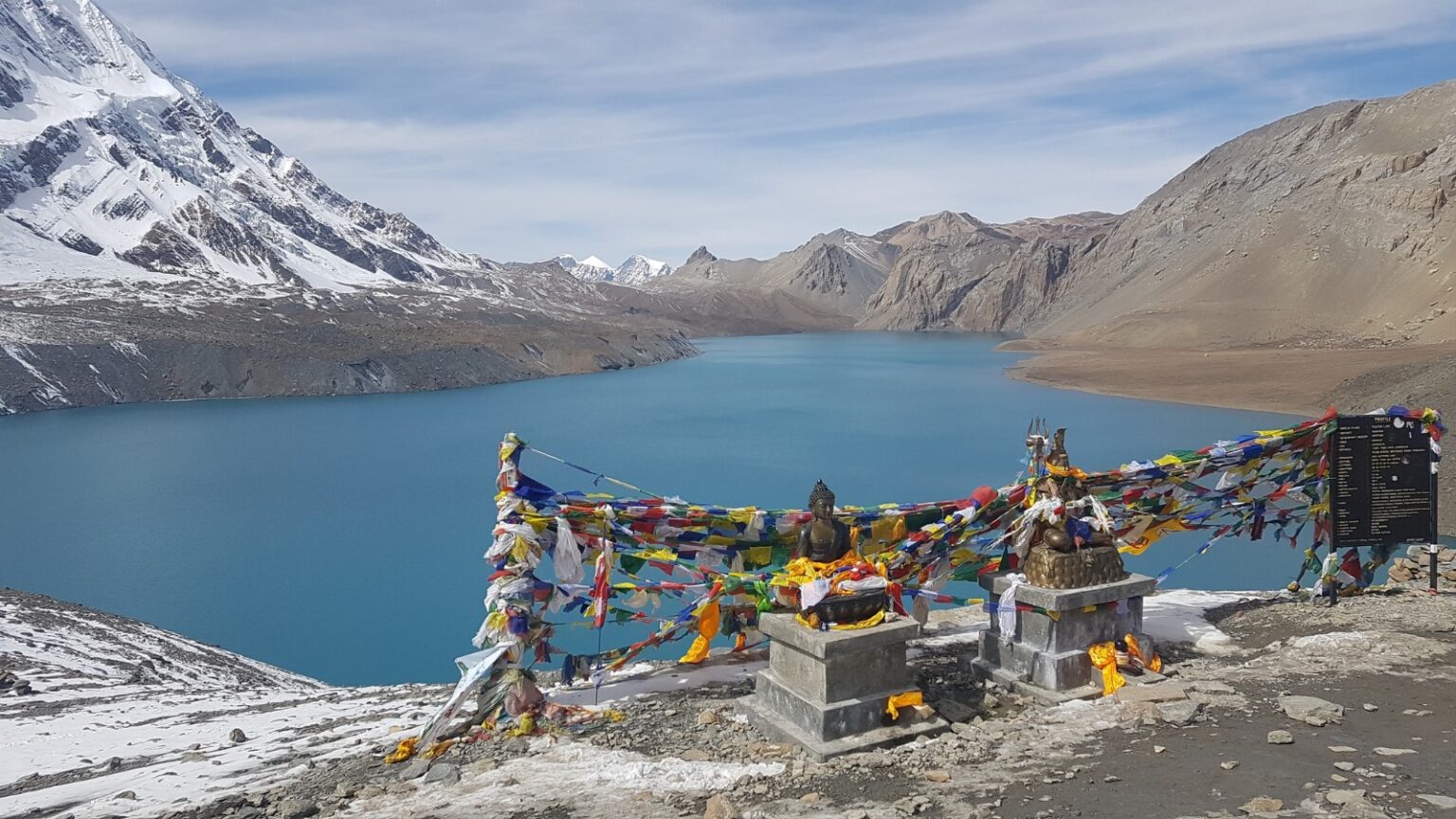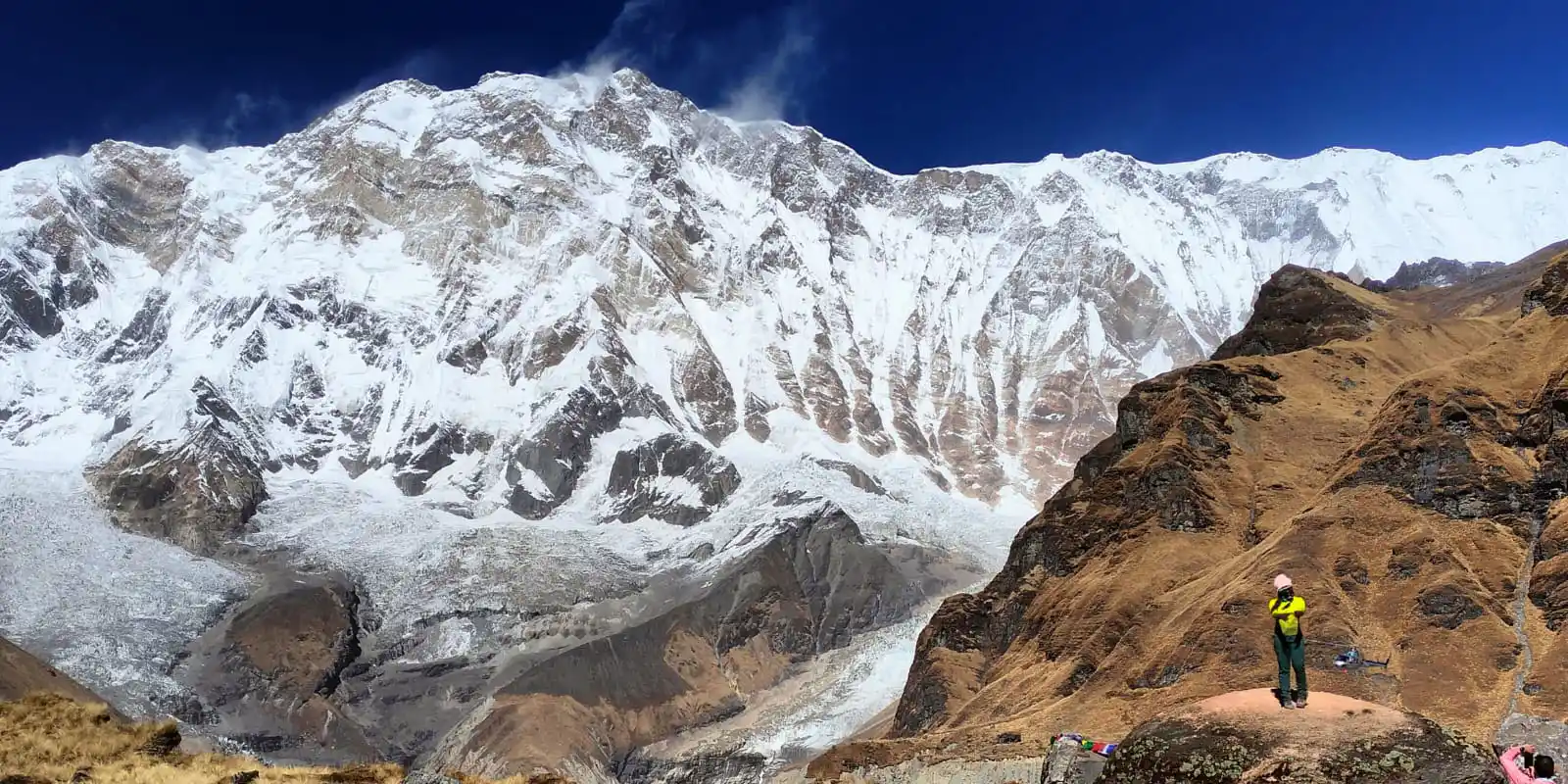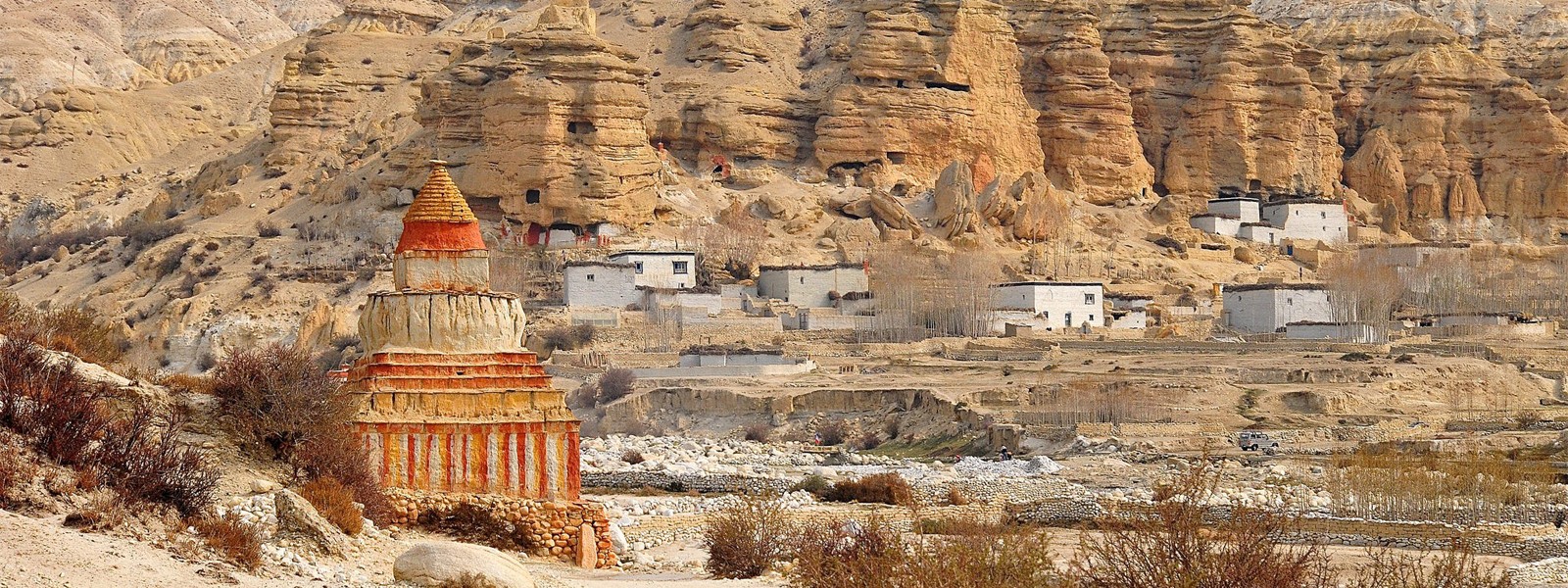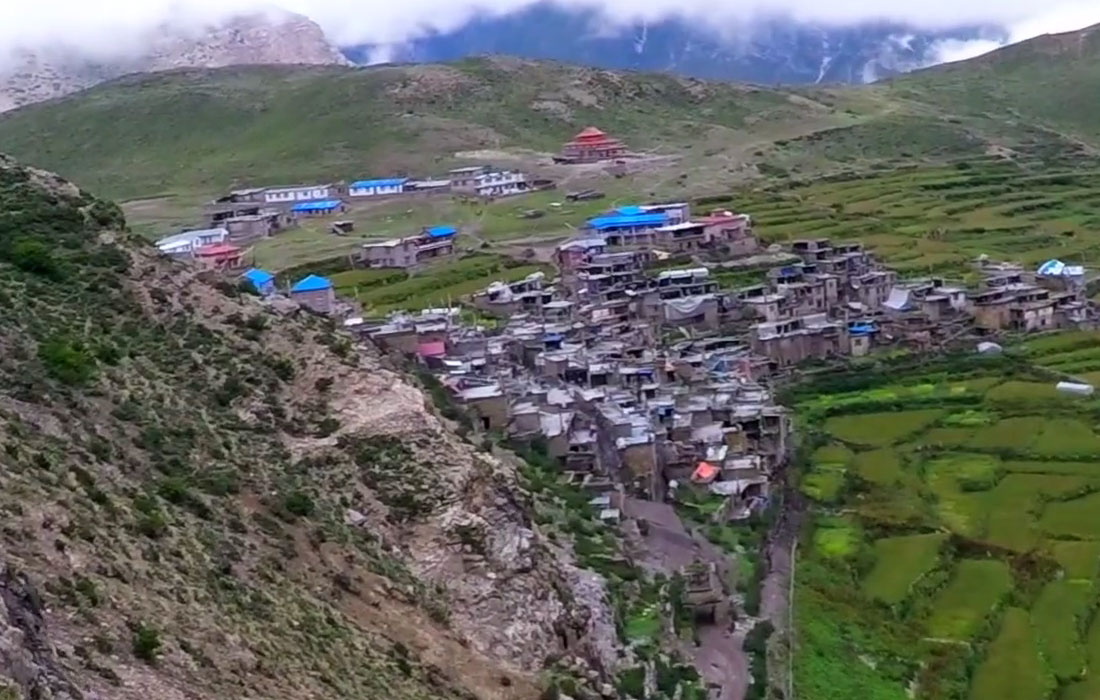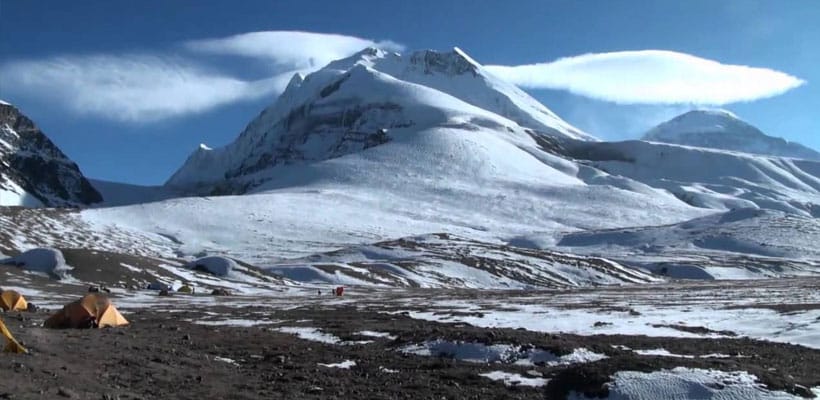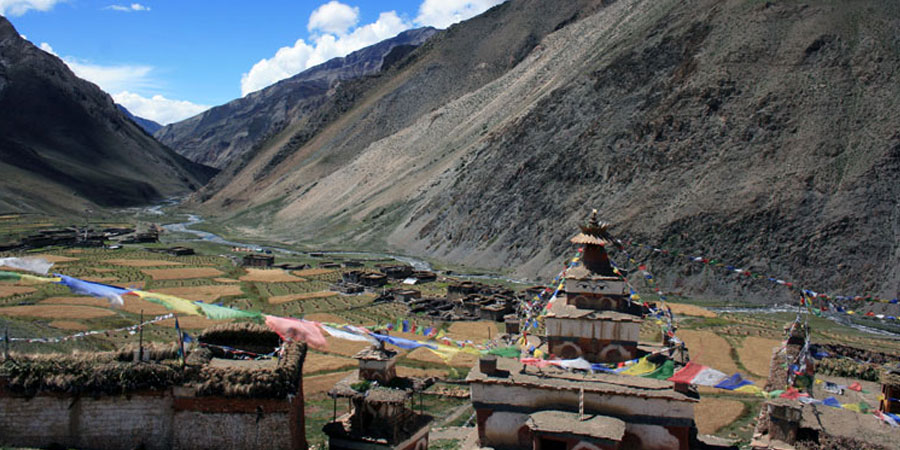Accommodation during Annapurna Circuit with Tilicho Lake Trek
- In Kathmandu and Pokhara we provide comfortable accommodation in 3-star hotels with breakfast on a twin-sharing basis.(Private room accommodation can be arrange at an extra cost)
- During the trek, we provide comfortable teahouse accommodation on a twin-sharing basis. Hot showers, Wi-Fi, and device charging are available at an additional cost.
Meals and Drinking Water on the Annapurna Circuit with Tilicho Lake Trek
During the Annapurna Circuit with Tilicho Lake Trek, you will be served three freshly prepared meals daily—breakfast, lunch, and dinner—at traditional local teahouses along the route. The menus offer a variety of options including dal bhat (a hearty Nepali dish of rice, lentils, and vegetables), noodles, soups, momos, Tibetan bread, fried rice, pancakes, and eggs. While meals are simple, they are warm, nourishing, and designed to keep your energy levels high for the demanding trails—especially as you ascend toward Tilicho Lake and Thorong La Pass.
Staying hydrated is especially important at high altitudes. While bottled water is available at most teahouses, we strongly encourage you to bring a reusable water bottle or hydration bladder to help minimize plastic waste. Our guide will provide water purification tablets or drops, so you can safely refill from local streams or taps whenever needed. This helps ensure a sustainable and health-conscious trekking experience throughout your journey.
Required Permits for the Annapurna Circuit with Tilicho Lake Trek
For the Annapurna Circuit with Tilicho Lake Trek, you’ll need the Annapurna Conservation Area Permit and a TIMS Card—but don’t worry, we handle everything for you. All permit fees are included in your package, and we’ll take care of the paperwork so you can fully enjoy your trekking adventure
- Annapurna Conservation Area Permit (ACAP): NPR 3,000 per person
- Trekkers’ Information Management System (TIMS) Card: NPR 1,000 per person
Best Time for Annapurna Circuit with Tilicho Lake Trek
The best seasons for the Annapurna Circuit with Tilicho Lake Trek are spring (March to May) and autumn (September to November), when the weather is stable, skies are clear, and the trails reveal breathtaking views of Annapurna, Dhaulagiri, Thorong La Pass, and Tilicho Lake. Spring brings blooming rhododendrons, lush greenery, and vibrant landscapes, while autumn offers crisp air, clear skies, and spectacular mountain panoramas.
Winter (December to February) can be extremely cold at higher passes, especially around Thorong La and Tilicho Lake, making trekking challenging for most adventurers. Monsoon season (June to August) brings heavy rainfall, slippery trails, and limited visibility, though some lower sections of the trail remain passable. No matter when you choose to trek, we ensure your Annapurna Circuit with Tilicho Lake journey is safe, comfortable, and unforgettable.
Annapurna Circuit with Tilicho Lake Trek Difficulties
The Annapurna Circuit with Tilicho Lake Trek is an adventurous and rewarding journey, but it also comes with added challenges. The route covers diverse terrain and reaches high altitudes, with the Tilicho Lake section (4,949m) adding a demanding side trip before crossing the Thorong La Pass (5,416m). This combination increases the risk of altitude sickness, requiring good physical fitness and proper acclimatization.
Trekkers should be prepared for long walking days (6–8 hours), steep ascents, rocky trails, and occasional exposure to harsh weather, especially at higher elevations where cold, wind, or snow can occur. Some sections are remote, with limited facilities. However, with the right gear, a slow and steady pace, and expert guidance from Aarohi Holiday, the trek is manageable and incredibly fulfilling for those ready to embrace the challenge
Altitude Sickness and Prevention on the Annapurna Circuit with Tilicho Lake Trek
At Aarohi Holiday, your safety is our top priority, especially on high-altitude treks like the Annapurna Circuit with Tilicho Lake. Our guides are highly experienced in altitude sickness prevention, first aid, and emergency response. They monitor trekkers carefully and ensure a gradual ascent, with acclimatization days built into the itinerary to help your body adjust naturally to the thin air at passes above 5,000 meters, including Thorong La.
Altitude sickness can cause headaches, nausea, dizziness, or unusual fatigue, and any sign of discomfort is treated immediately. Depending on the situation, our team may recommend extra rest, increased hydration, descent to a lower altitude, or, in rare cases, emergency evacuation. Before the trek begins, you will receive a detailed safety briefing, and throughout the journey, your guide will stay in regular contact to monitor your condition. With proper precautions and the support of our expert local team, you can confidently enjoy the breathtaking landscapes, alpine lakes, and cultural encounters of the Annapurna Circuit with Tilicho Lake.
Travel Insurance for Annapurna Circuit with Tilicho Lake Trek
Travel insurance is essential for the Annapurna Circuit with Tilicho Lake Trek. This high-altitude trek carries potential risks, including altitude sickness and unforeseen events. For your safety and immediate medical assistance if needed, it’s crucial to have comprehensive travel insurance that covers emergency air evacuation, medical treatment, and associated expenses.
Annapurna Circuit with Tilicho Lake Trekking Itinerary
Your adventure begins in Kathmandu, with time to explore UNESCO World Heritage Sites before heading to Besisahar to begin your trek. You’ll pass through picturesque villages like Bhulbhule, Jagat, Dharapani, and Chame, gaining altitude gradually as the scenery transitions from lush hills to alpine landscapes.
From Pisang to Manang, you’ll witness breathtaking views and diverse cultures. After a rest day in Manang for acclimatization, the trail diverts to Khangsar and then to Tilicho Base Camp, leading to the stunning Tilicho Lake (4,949m)—one of the highest lakes in the world. The route then rejoins the classic circuit toward Yak Kharka and Thorong Phedi, followed by the thrilling ascent over Thorong La Pass (5,416m).
Descending to the sacred site of Muktinath, the journey continues through Marpha, Ghasa, and the natural hot springs at Tatopani. After rejuvenating, you’ll trek to Ghorepani and enjoy a sunrise hike to Poon Hill (3,210m) for panoramic Himalayan views. The trek ends in Pokhara, with a day to relax and explore before returning to Kathmandu. This 22-day trek blends adventure, culture, and dramatic alpine scenery for a truly unforgettable Himalayan experience.
Annapurna Circuit with Tilicho Lake cost
The cost for the Annapurna Circuit with Tilicho Lake Trek is USD 1,350 per person, covering all major services from Kathmandu to Kathmandu. This includes transportation, permits, accommodation, meals, and an experienced guide and porter.
Group discounts of 5% to 10% are available, and one group leader gets a free spot. This all-inclusive price offers great value for an extended adventure that includes both the classic circuit and the stunning Tilicho Lake.
Important Notes for Annapurna Circuit with Tilicho Lake
- The drive from Kathmandu to Besi Sahar takes around 6-7 hours. You can also hire a private jeep for a more comfortable journey.
- The drive from Kathmandu to Besi Sahar takes around 6-7 hours. You can also hire a private jeep for a more comfortable journey.
- Meals are included during the trek, but food expenses in Kathmandu and Pokhara are not covered.
- Accommodation during the trek is in teahouses on a twin-sharing basis, with hot showers and charging available for an extra fee.
- The trek involves high-altitude sections, including Thorong La Pass (5,416m), so proper acclimatization and hydration are essential.
- Weather in the Himalayas is unpredictable, and conditions at high passes can change rapidly; always be prepared with proper gear.
- Drones are not allowed without prior permission, which can be difficult to obtain.
- Travel insurance covering high-altitude trekking and emergency helicopter evacuation is strongly recommended.
Fitness Preparation for the Trek
The Annapurna Circuit with Tilicho Lake Trek is a physically demanding high-altitude journey that requires good fitness and stamina. Trekkers should be prepared for 5–8 hours of walking each day over steep and rugged terrain, including visits to Tilicho Lake (4,949m) and Thorong La Pass (5,416m).
While prior trekking experience helps, it’s not necessary. Cardio training, leg and core strength exercises, and practice hikes with a backpack are great ways to prepare. With the right training, proper acclimatization, and expert guidance from Aarohi Holiday, most fit individuals can complete the trek safely and enjoyably.
A Typical Day on the Trail
A typical day on the Annapurna Circuit with Tilicho Lake Trek involves 5 to 8 hours of trekking through diverse landscapes, from lush forests and terraced fields to alpine meadows and high mountain passes. Trekkers usually start after a hearty breakfast, following well-marked trails that pass through charming villages, monasteries, cascading waterfalls, and the dramatic Kali Gandaki Gorge—the deepest gorge in the world.
The pace is moderate to allow for gradual acclimatization, especially at higher altitudes near Thorong La Pass (5,416m) and Tilicho Lake (4,919m). Along the way, trekkers stop for lunch at teahouses or scenic spots and short breaks to enjoy the breathtaking Himalayan views. Evenings are spent in comfortable teahouses or lodges, where you can relax, enjoy a warm dinner, and interact with friendly locals. This routine balances trekking, sightseeing, and acclimatization, ensuring a safe, enjoyable, and immersive Himalayan experience every day.
Arrival Instruction
Upon your arrival at Tribhuvan International Airport, our company representatives are stationed to welcome you to the country. We request you to carefully look for your name being held by our representatives following the events upon landing. The representatives are responsible to escort you to your hotel in Kathmandu. You will see men offering you to carry luggage and take you to your destination as you exit the airport. We request you pay no attention to these people and follow the designated representatives and follow their instructions. You will also need to keep an eye on your luggage and belongings to avoid any complications.
Nepal Visa Entry Procedure
For entry into Nepal, there are visa requirements everyone (except Indian nationals) must complete before being allowed to pass through immigration. This is for air travel as well as overland transportation. Most visitors may obtain a visa to enter Nepal, however, there are exceptions.Three options are available for entry
- 15-day single entry: US $30
- 30-day single entry: US $50
- 90-day multiple entries: US $125
Please have a passport valid for at least 6 months from the time of entry, and have cash ready, preferably in US dollars, though there are other currencies Nepal Immigration accepts. If you are entering via overland, you must have US cash and 3 passport photos. For arrival by air, the kiosks at the airport take your picture for you.
For the most up to date list of exceptions for visa on arrival or to obtain the most current visa information, visit the Nepal Department of Immigration website.
